How emotional avoidance contributes to addiction
Unraveling the Hidden Link Between Emotional Avoidance and Addiction

Understanding Emotional Avoidance and Its Role in Addiction
Emotional avoidance is a common yet often overlooked factor in the development and maintenance of addiction. It involves strategies like denial, suppression, and distraction to escape or numb unpleasant feelings, which can eventually lead to dependency on substances or compulsive behaviors. This article explores the psychological and neurological mechanisms underlying this relationship, how attachment styles influence avoidance, and effective therapeutic strategies to address this complex issue.
Defining Emotional Addiction and Its Symptoms
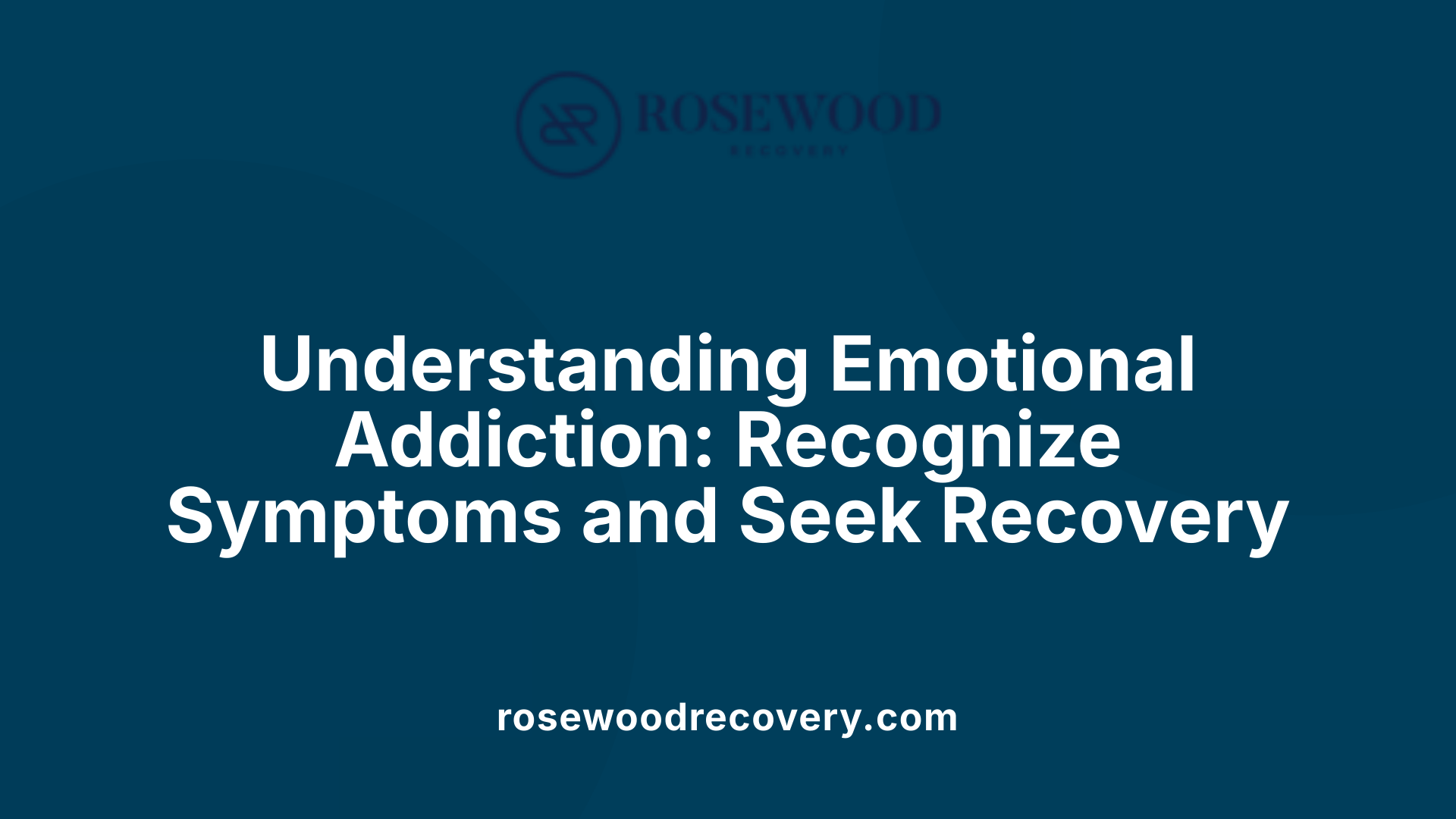
What is emotional addiction?
Emotional addiction refers to a dependency on specific emotional states or responses, often driven by the brain's reward systems. It manifests when individuals repeatedly seek to recreate, avoid, or control intense feelings such as happiness, anger, or shame. This pattern may develop from past trauma, unstable environments, or learned behaviors, leading to habits like seeking chaos, self-sabotage, or an obsessive craving for validation. Those experiencing emotional addiction often struggle with mood swings and difficulty regulating their feelings, which can significantly harm their health and relationships.
Recognizing emotional triggers, cultivating self-awareness, and setting healthy boundaries are critical steps in recovery. Therapeutic approaches, including mindfulness practices and self-regulation techniques, are effective in helping individuals break free from reliance on problematic emotional cycles.
Common symptoms of emotional addiction
Symptoms often observed in emotional addiction include rapid mood swings—fluctuating from euphoria to irritability or depression. Persistent feelings of sadness, hopelessness, and decreased interest in previously enjoyed activities are also typical. Many individuals withdraw from social interactions, leading to loneliness and isolation.
Compulsive behaviors centered around seeking certain emotional experiences are common. For example, someone might compulsively escalate conflicts to feel exhilaration or remain trapped in negative emotions like anger or anxiety despite knowing the harm they cause.
These symptoms not only impede emotional stability but also impact social and occupational functioning. Recognizing these signs early is essential for initiating effective treatment strategies, such as therapy or mindfulness-based interventions, which aim to foster emotional resilience and reduce dependence on unhealthy emotional patterns.
How emotional dependence affects health and relationships
The effects of emotional dependence extend into various facets of life, notably physical health and interpersonal relationships. Dependence on negative emotions can increase stress levels, weaken the immune system, and contribute to disorders like anxiety and depression.
In relationships, emotional addiction often leads to toxic dynamics, as individuals may cling to familiar emotional patterns, including manipulation or dependency, thus creating cycles of conflict or codependency. This can hinder healthy communication and diminish mutual support.
Addressing emotional addiction involves understanding its root causes—such as unresolved trauma or emotional repression—and learning healthier ways to process and express feelings. Incorporating therapeutic approaches that promote emotional awareness and acceptance, like Dialectical Behavioral Therapy (DBT) and Acceptance and Commitment Therapy (ACT), can significantly improve emotional regulation skills.
| Aspect | Consequences | Strategies for Improvement | Additional Notes |
|---|---|---|---|
| Physical health | Increased stress, compromised immune system | Mindfulness, stress management techniques | Reducing emotional dependence can boost overall health |
| Interpersonal relationships | Conflict, codependency, instability | Building emotional awareness, therapy, boundaries | Healthy emotional processing fosters better connections |
| Mental health | Anxiety, depression, emotional dysregulation | Self-awareness, regulation skills, professional support | Essential for maintaining mental well-being |
| Behavioral patterns | Mood swings, obsession, withdrawal | Recognizing triggers, engaging in healthy coping strategies | Critical for breaking reliance on negative emotional states |
Understanding and addressing emotional addiction is vital for achieving emotional stability and holistic well-being. By recognizing symptoms, understanding their impacts, and employing targeted therapies, individuals can develop healthier emotional habits, leading to more fulfilling relationships and improved health outcomes.
The Cycle of Emotional Avoidance and Addiction
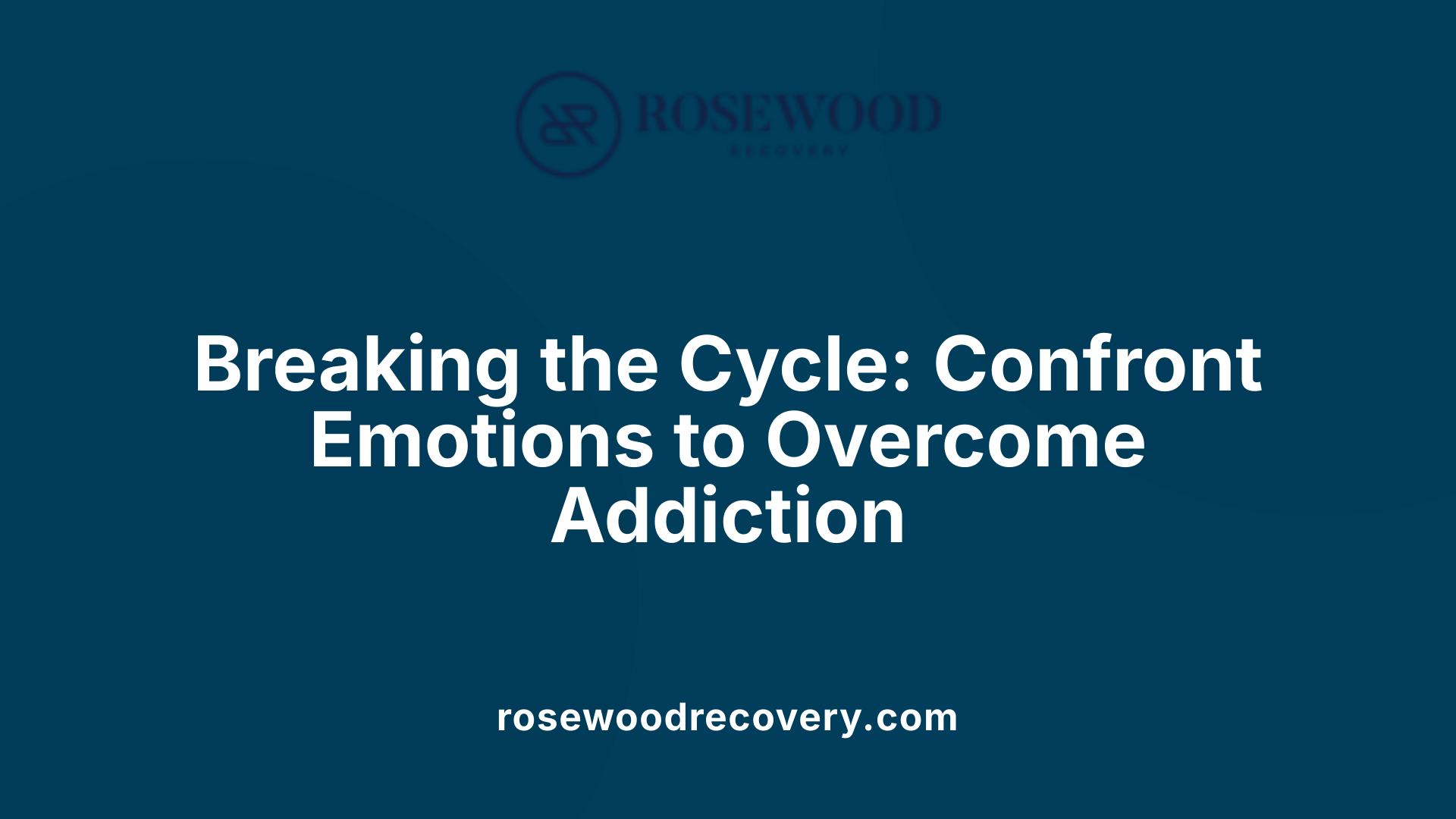
How does emotional avoidance contribute to addictive behaviors?
Emotional avoidance plays a central role in the development and maintenance of addiction. When individuals struggle with painful or overwhelming feelings, they often resort to avoidance strategies such as substance use to escape or numb these negative emotions. This act of avoidance becomes a form of self-medication, temporarily relieving distress but ultimately reinforcing dependency.
Therapies like Acceptance and Commitment Therapy (ACT) and Mindfulness-Based Relapse Prevention emphasize the importance of facing emotions directly. These approaches aim to reduce experiential avoidance by fostering acceptance and awareness of feelings, which can diminish the cravings that drive substance use. Over time, confronting emotions instead of avoiding them decreases reliance on addictive substances, breaking the cycle of dependence.
By teaching individuals to tolerate emotional pain rather than escape from it, these therapies promote healthier emotional regulation. Recognizing and accepting painful experiences rather than suppressing them is a crucial step toward recovery, as avoidance behaviors tend to deepen emotional distress and reinforce addictive patterns.
The role of emotional suppression and denial
Suppressing or denying emotional experiences often leads to an increase in emotional intensity over time. Emotional suppression involves consciously or unconsciously pushing away feelings, which can cause them to resurface more powerfully later. Denial, similarly, involves refusing to acknowledge emotional pain, thereby preventing it from being processed and integrated.
Such avoidance strategies serve as short-term relief but impair emotional regulation and resilience. The suppression of feelings can create a backlog of unresolved emotional issues that might trigger substance use or other compulsive behaviors. Moreover, denial of addiction itself hampers treatment efforts, delaying recognition of the problem and reducing motivation for change.
In the context of addiction, denial and suppression foster a cycle where emotional pain remains unaddressed, increasing the likelihood of relapse. Recovery approaches that promote emotional awareness and acceptance aim to dismantle these defenses, encouraging honest engagement with emotional experiences.
Impact of avoidance on emotional regulation and interpersonal relationships
Persistent avoidance of emotions affects not only individual emotional health but also the quality of interpersonal relationships. Avoidance can lead to emotional distancing, reduced intimacy, and misunderstandings, as individuals struggle to express or share their feelings effectively.
People with high levels of emotional avoidance often withdraw from close relationships to minimize risk of rejection or criticism, which are common fears linked with attachment insecurities like avoidant attachment style. This withdrawal can exacerbate feelings of loneliness and social disconnection, which in turn may increase reliance on substances or compulsive behaviors as alternative sources of comfort.
Furthermore, avoidance impairs the development of emotional regulation skills, as individuals are less likely to confront and process their feelings in real-time. This can create a vicious cycle: emotional suppression leads to heightened distress, which then fuels further avoidance and maladaptive coping strategies.
Effective treatment often involves addressing these relational patterns through therapies such as experiential therapy, exposure therapy, or family involvement, helping individuals build healthier emotional connections and improve their social functioning.
| Aspect | Effect | Underlying Process |
|---|---|---|
| Reinforcement of addiction | Substance use persists and escalates | Avoidance as a coping mechanism |
| Impact on relationships | Emotional distancing; social withdrawal | Fear of rejection; attachment insecurities |
| Emotional regulation | Difficulties managing feelings | Suppression; denial; avoidance |
| Long-term outcome | Increased psychological distress | Unresolved emotional conflicts |
Addressing emotional avoidance, therefore, is essential for breaking the cycle of addiction. Strategies that foster emotional awareness, acceptance, and healthy interpersonal connections can lead to sustained recovery and improved quality of life.
Neurobiological and Psychological Underpinnings
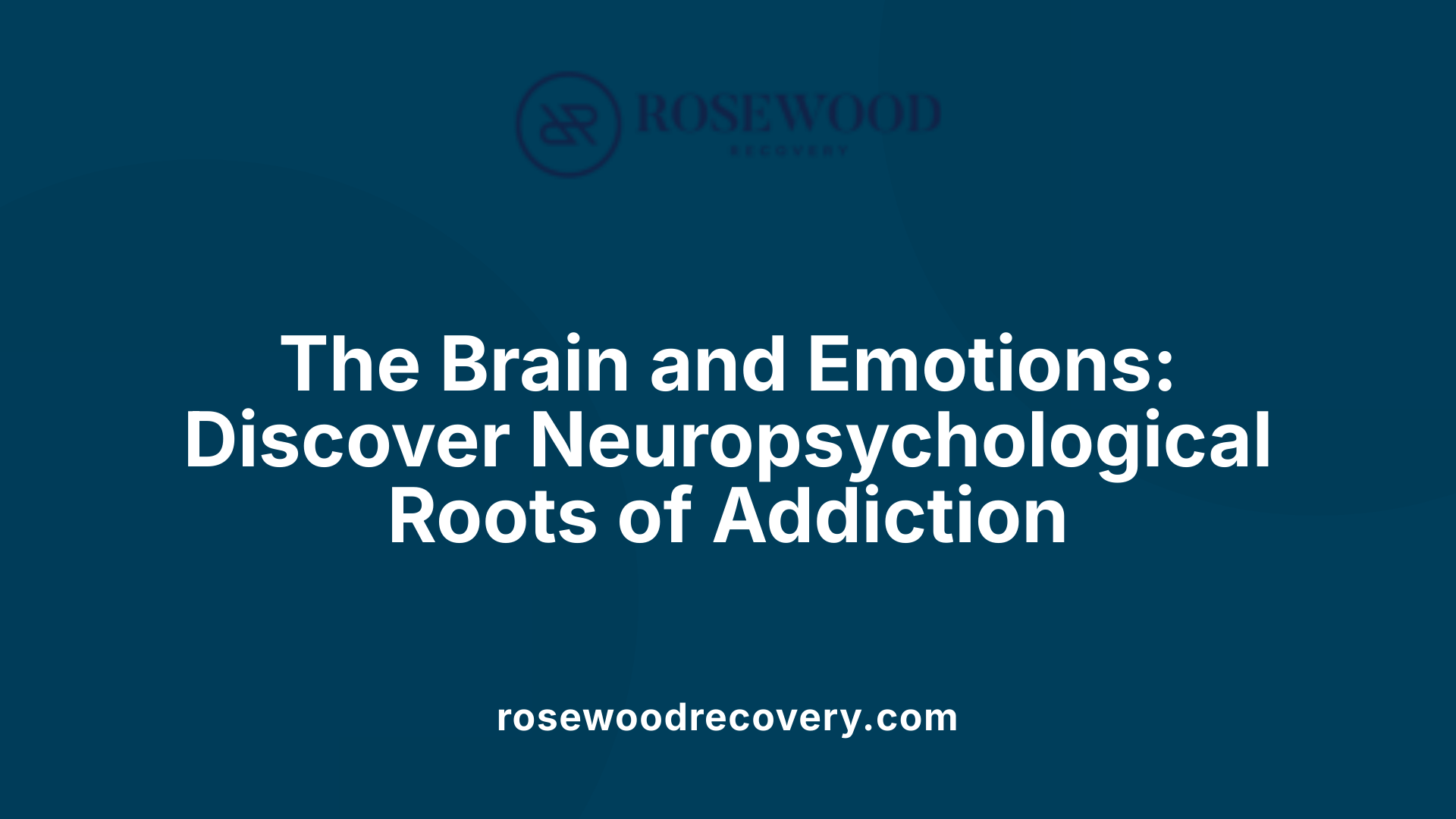
What psychological and neurological mechanisms underlie the relationship between emotional avoidance and addiction?
The connection between emotional avoidance and addiction is deeply rooted in both brain function and psychological processes. When individuals habitually avoid painful feelings, certain brain circuits involved in regulation and decision-making become dysregulated.
Key brain areas involved include the prefrontal cortex, amygdala, basal ganglia, and the extended amygdala. The prefrontal cortex is responsible for executive functions such as impulse control, emotional regulation, and decision-making. Chronic emotional avoidance can impair its activity, making it harder for individuals to confront or process distressing feelings.
Simultaneously, the extended amygdala plays a crucial role in stress and negative emotional states. Neuroadaptations here can heighten stress responses, creating a cycle where emotional pain becomes overwhelming. To escape this discomfort, individuals may turn to substances, which temporarily modulate these brain circuits.
At the neurochemical level, drug use causes neuroplastic changes in these areas, increasing incentive salience — the brain’s attribution of importance to substance-related cues. This reinforcement makes substance seeking habit-forming, especially when it successfully alleviates negative emotions.
Alterations in the basal ganglia also contribute by strengthening habitual behaviors, making drug seeking automatic and difficult to resist.
Overall, these neuroadaptations reduce the brain’s sensitivity to natural rewards and impair emotional regulation, fostering a cycle of avoidance. This interplay explains why individuals might increasingly rely on substances to manage emotional pain, ultimately deepening addiction.
How do brain changes reinforce avoidance and compulsivity?
In addiction, repeated substance use leads to structural and functional changes in the brain. These include decreased activity in areas that support self-control and increased reactivity in circuits driving compulsive behaviors.
The impaired prefrontal cortex weakens the individual's ability to evaluate consequences and resist urges. Meanwhile, hyperactivity in the basal ganglia and parts of the reward system amplifies craving and habitual drug-seeking behaviors.
Neurochemical influences, such as dopamine dysregulation, make substances more salient than natural rewards. This shift further entrenches avoidance, as the brain prioritizes drug use over healthier emotional processing.
Research shows that distress linked to emotional dysregulation mediates the relationship between these brain changes and compulsive behaviors. High distress levels motivate continued substance use as a maladaptive way to avoid confronting painful feelings.
In summary, neurobiological alterations reinforce avoidance by impairing emotional self-regulation and strengthening habitual responses, which sustain compulsive drug-seeking despite negative consequences.
Impact of Repressed Emotions and Emotional Pain
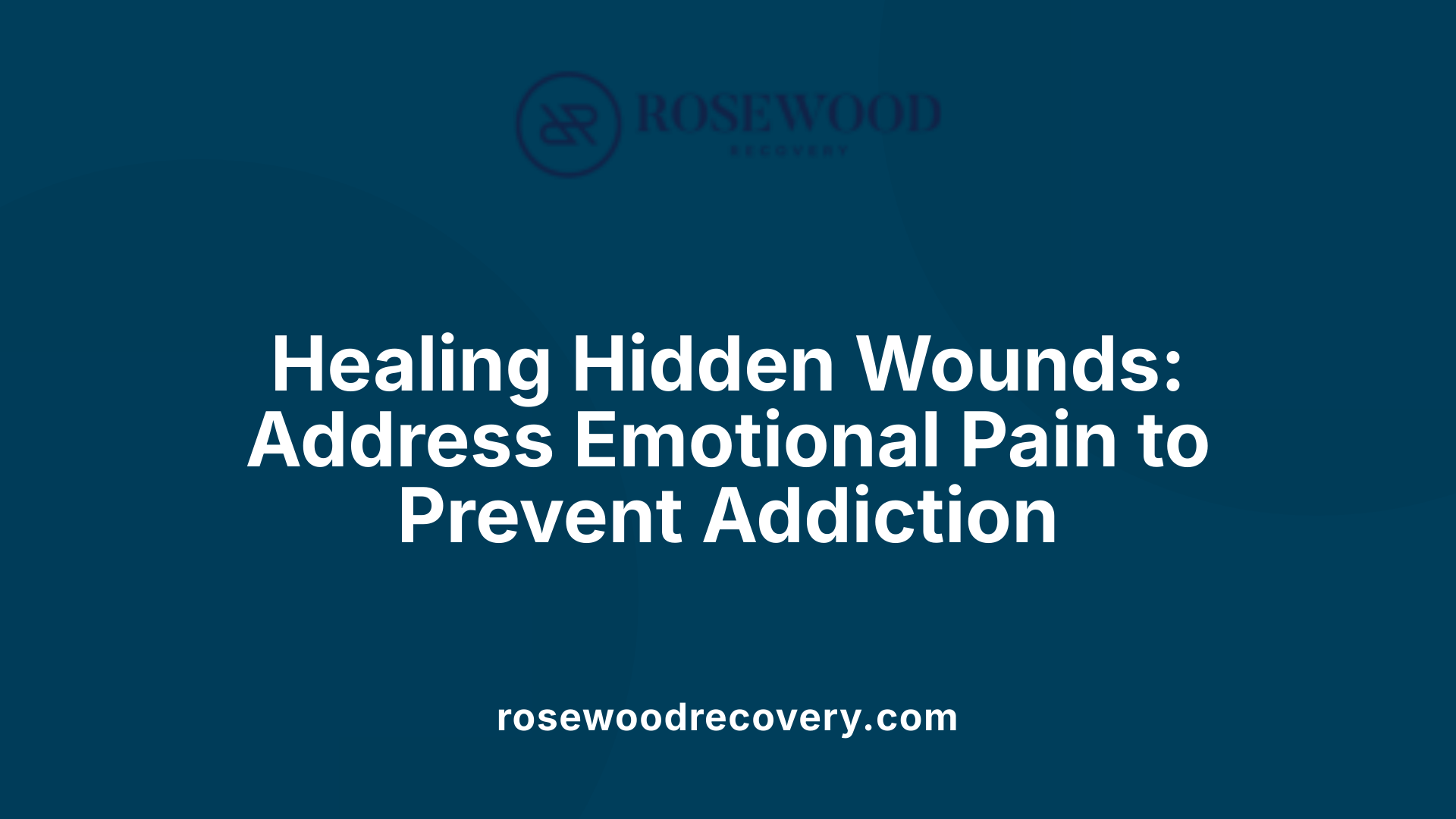
What is the impact of emotional pain and repressed emotions on the development of addiction?
Unaddressed emotional pain and repressed emotions play a significant role in both the development and persistence of addiction. When emotional pain from past experiences—such as trauma, loss, or chronic stress—is pushed out of conscious awareness, it can create a background of unresolved distress. Individuals often attempt to numb or avoid these difficult feelings through substance use, which provides temporary relief but ultimately reinforces avoidance behaviors.
Neurobiologically, addiction alters the brain's reward and stress systems, making individuals more prone to negative emotional states. As these states intensify, the inability to regulate emotions effectively leads to impulsive seeking of substances as a form of self-medication. Co-occurring mental health issues like depression and anger further impair emotional regulation, creating a vicious cycle where unresolved emotional pain fuels ongoing substance use. This cycle underscores the importance of addressing emotional regulation in addiction treatment, as unprocessed emotions serve as both triggers and contributors to sustained addictive behaviors.
How do unresolved emotional issues influence substance abuse?
Unresolved emotional issues, especially those stemming from past trauma, loss, or ongoing adverse circumstances, act as strong triggers for substance abuse. When emotions such as shame, anger, or grief are repressed, they can accumulate and lead to increased physiological and psychological distress.
To manage this internal turmoil, individuals may turn to drugs or alcohol for quick relief. Initially, these substances seem to help reduce pain and emotional intensity, but over time, they can establish a dependency, as the brain begins to associate substance use with emotional escape. This creates a reinforcing cycle where avoiding emotional issues through substances makes future emotional regulation even more difficult.
Effective therapy that promotes emotional awareness—like Cognitive Behavioral Therapy (CBT), trauma-informed approaches, and mindfulness-based interventions—can help individuals confront and process unresolved emotional issues. Such approaches are vital for breaking the link between emotional pain and addiction, fostering healthier emotional responses and reducing reliance on substances.
Effect on emotional regulation and mental health
Persistent avoidance of emotional pain and repression impairs emotional regulation—the ability to manage and respond to emotional experiences effectively. When emotions are avoided or suppressed, they tend to intensify over time, leading to heightened anxiety, depression, and stress.
This emotional dysregulation can hinder self-awareness and self-control, making it difficult for individuals to cope with everyday stressors or to participate in social relationships effectively. The inability to tolerate emotional distress often results in maladaptive coping strategies, such as substance use or avoidance behaviors, which further exacerbate mental health issues.
Therapies that focus on emotional acceptance, such as Acceptance and Commitment Therapy (ACT) and mindfulness practices, aim to improve emotional regulation by encouraging individuals to face and tolerate their emotional experiences. Enhancing emotional resilience reduces vulnerability to mental health disorders and diminishes the cravings and compulsive behaviors linked to poor emotional regulation.
| Aspect | Impact | Related Concepts |
|---|---|---|
| Emotional Pain | Can act as a trigger for substance use | Trauma, unresolved issues |
| Repression | Leads to increased distress, impulsivity | Avoidance behaviors, emotional dysregulation |
| Mental Health | Higher risk of depression, anxiety | Emotional suppression, poor regulation |
| Treatment Focus | Enhances emotional awareness | Mindfulness, CBT, trauma therapy |
Addressing repressed emotions and emotional pain is crucial in breaking the cycle of addiction and improving overall mental health. Recognizing and working through these underlying issues can lead to healthier coping strategies and more sustainable recovery.
Search Query for Further Information: Emotional pain, repression, and addiction development.
Therapeutic Strategies and Hope for Recovery
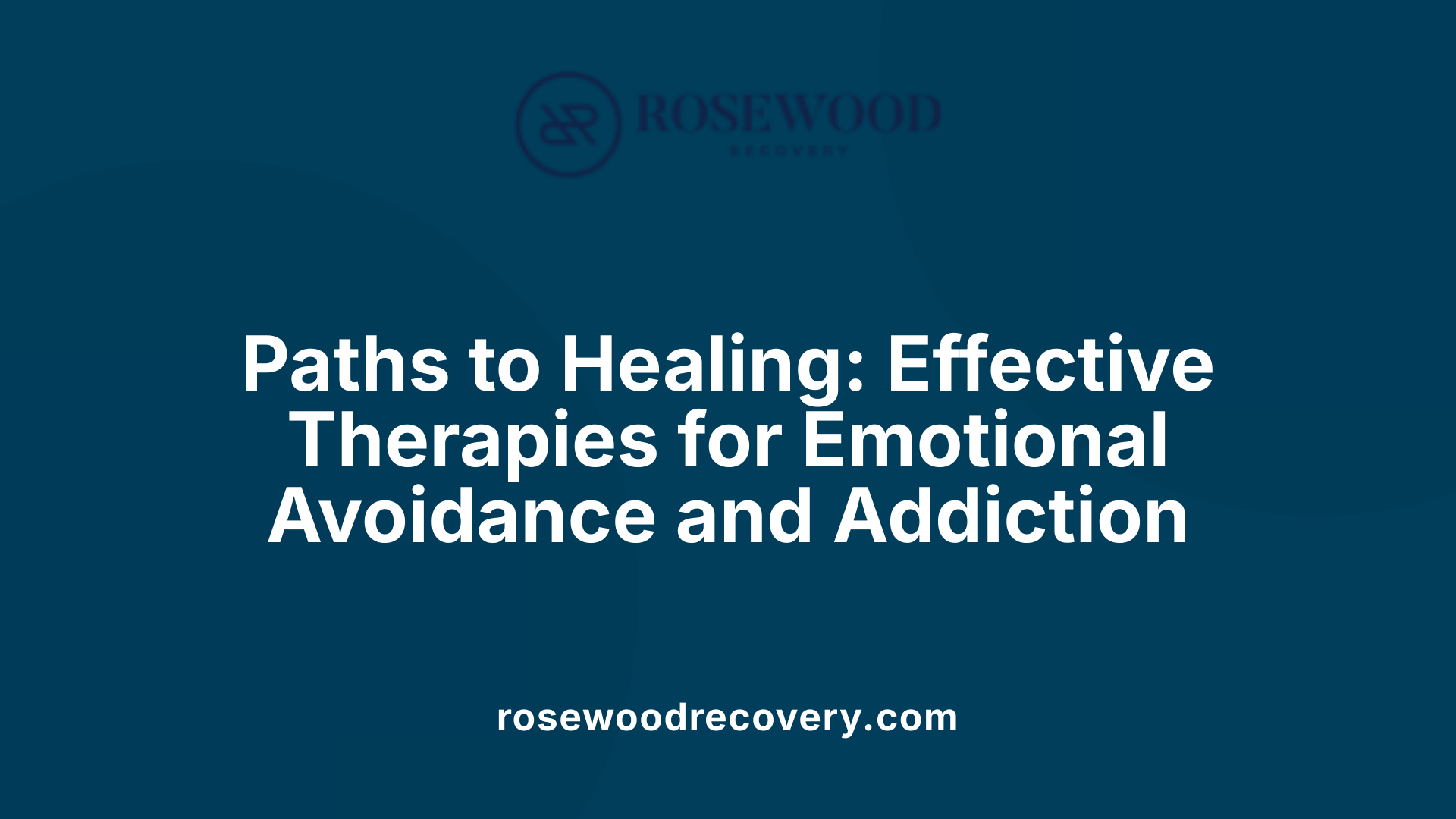
What therapeutic strategies are effective in addressing emotional avoidance during addiction recovery?
Effective approaches for tackling emotional avoidance in recovery involve therapies that foster emotional awareness and acceptance. Acceptance and Commitment Therapy (ACT) is prominent, encouraging individuals to accept their emotional pain without judgment and to develop psychological flexibility. Dialectical Behavior Therapy (DBT) focuses on teaching mindfulness, distress tolerance, emotional regulation, and interpersonal effectiveness, all of which help clients recognize and tolerate difficult emotions.
Trauma-informed care also plays a crucial role, especially for those with underlying traumatic experiences. This approach creates a safe environment for clients to process unresolved emotional pain, reducing the tendency to avoid painful feelings.
Mindfulness-Based Relapse Prevention (MBRP) is another valuable strategy. MBRP enhances awareness of bodily sensations associated with emotions and cultivates acceptance of these feelings. By learning to observe rather than suppress emotions, clients can diminish cravings triggered by emotional distress.
Emotion-focused therapies, including expressive arts therapy, help individuals identify, express, and regulate their emotions. These techniques build emotional resilience by promoting healthy expression and coping skills.
Building social support and nurturing secure attachments are vital components. Connecting with others reduces feelings of isolation, which often sustains avoidance behaviors. Support groups such as Alcoholics Anonymous or Narcotics Anonymous provide community and understanding, reinforcing emotional acceptance.
In summary, integrating therapies like ACT, DBT, trauma-informed care, and mindfulness into recovery plans can significantly decrease emotional avoidance. These strategies help clients gain control over their feelings, reduce reliance on substances for escape, and promote lasting recovery.
Moving Towards Emotional Healing and Sustainable Sobriety
In exploring how emotional avoidance contributes to addiction, it becomes clear that unaddressed emotional pain, neurobiological changes, and attachment patterns all play crucial roles. Overcoming avoidance requires confronting difficult feelings through evidence-based therapies and cultivating emotional awareness, acceptance, and resilience. Recognizing the signs of emotional addiction and seeking help not only breaks the cycle of reliance on substances but also fosters holistic healing. Recovery is a journey towards embracing one's emotional landscape, building meaningful connections, and developing healthier ways to cope with life’s inevitable stresses. Addressing emotional avoidance is ultimately about reclaiming personal autonomy, fostering emotional maturity, and achieving lasting well-being.
References
- Emotional Avoidance Maintains Mental Illness in Addiction & EDs
- Experiential avoidance, distress tolerance, and substance use ...
- The Tie Between Addiction and Avoidance | The Raleigh House
- Understanding substance use and emotional avoidance
- Avoidance is Addiction's Best Friend - Non 12 Step Drug Rehab and ...
- Understanding the Emotional Triggers Behind Addiction
- Addiction and autonomy: Why emotional dysregulation in ... - Frontiers
More Articles
Recovery Begins Here
Click below to get in touch and schedule a consult call with our team to begin your journey towards happiness and freedom.
Rosewood Recovery does not discrimate against any person because of the race, color, religious creed, ancestry, age, sex, sexual orientation, gender identity, national origin, handicap or disability or the use of a guide or support animal because of the blindness, deafness or physical handicap.


.jpeg)


